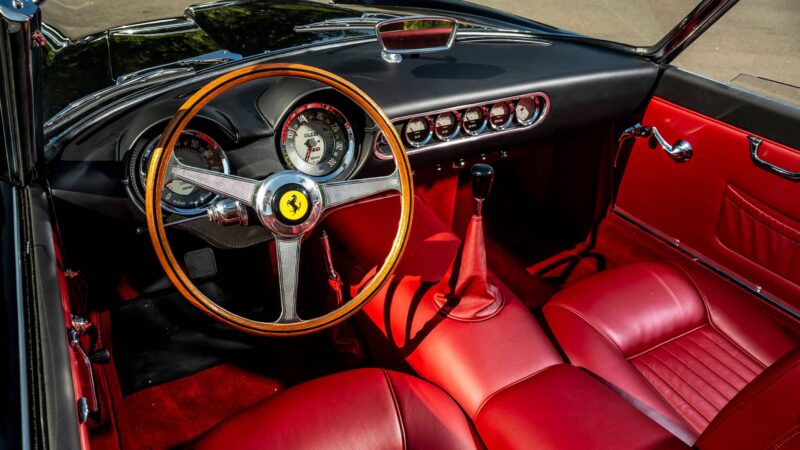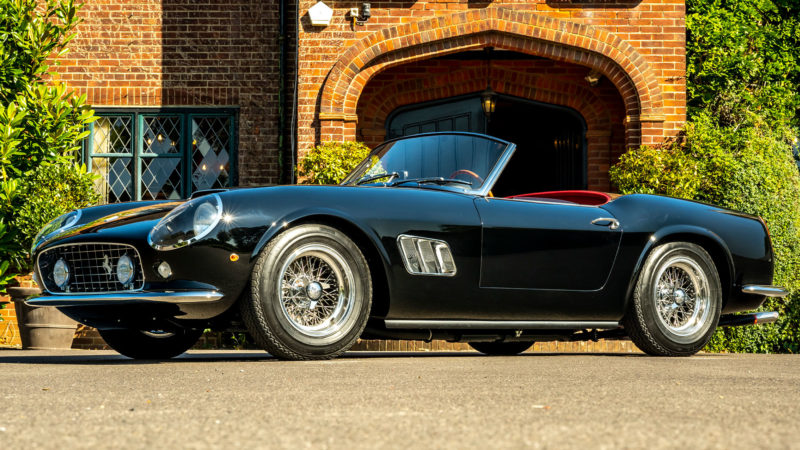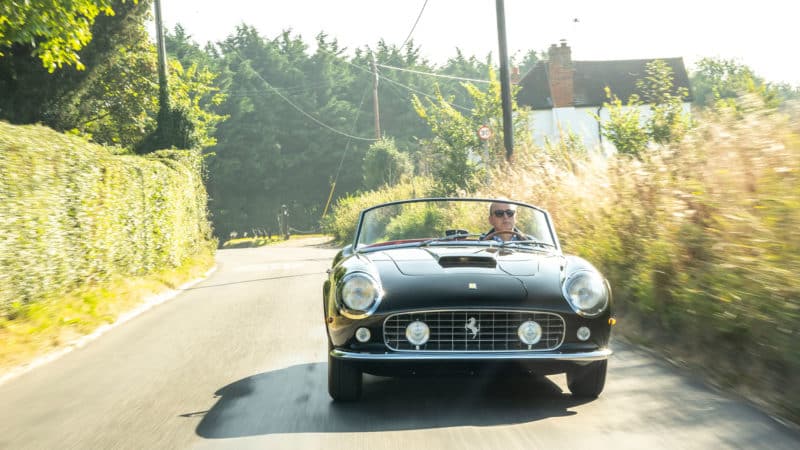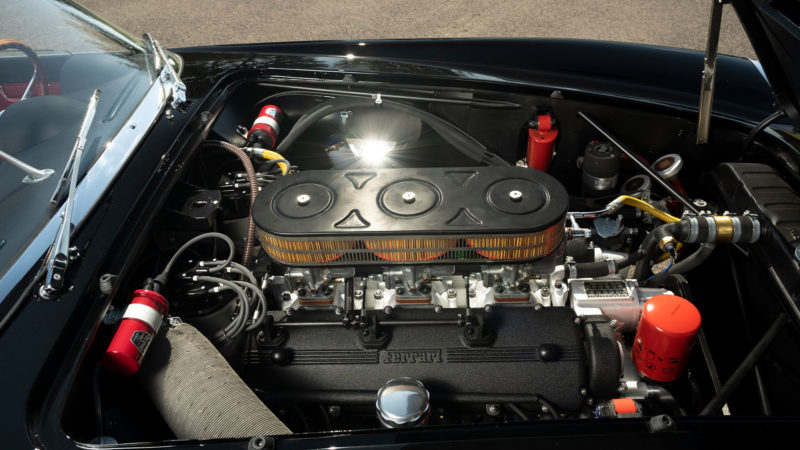And yet there are differences. Ferrari built Colombo V12s from 1.5-litres to 4-litres in capacity but never, I fancy, the 3.5-litres of this particular car. But you can choose a three or four litre motor too. And no real Spyder California has five ratios within its gearbox casing, nor additional sections of steel added to the sills to add strength to what might otherwise be a rather rickety structure. They call it the Spyder California Revival. I call it a Spyder California homage made with the benefit of hindsight.
You sit in the same kind of chair and stare at those gorgeous Veglia dials. I understand why Ferrari changed them in the mid ‘60s because they’re not that easy to read and look like they were designed in the 1950s (which they were), but each is a little work of art. The driving position is even more ridiculous than that of other old Ferraris I’ve driven, a factor I expect of Ferrari abbreviating the wheelbase of the Cal Spyder halfway through its life. It all seems to have come out of the footwell. At 6ft 3in I am very short of legroom and yet it is not sufficiently uncomfortable to spoil my enjoyment. Not even close in fact.
You turn and press the key in time honoured fashion and, fed by three twin choke Weber carburettors as it should be, the V12 fires instantly. The gear-lever slides deliciously into place, the clutch is gentle and you are away. At once you notice the oily smoothness of the steering and the almost total absence of shake and rattle from the structure. In this latter regard I concede it is quite unlike a 60-year-old convertible Ferrari and, in my view, all the better for it.

Veglia dials feature in interior recreation
Barry Hayden
It is a car that simply allows you to do more. For a start you can use it. Should you happen to have many, many millions-worth of original Cal Spyder in your shed, would you be happy to go and duke it out on the A4 in rush hour as I did in this car? Maybe, but I doubt it. Because although I expect the repair costs would be similar, dent this one you’re not also damaging the car’s history because it doesn’t have one.




